The Schwarzschild spacetime is not the only spacetime with a black hole. It’s just the simplest one.
In fact, there are infinitely many possible types of black holes. Pretty much any time enough matter gets compressed tightly enough, you’ll get a black hole. Gravity will be strong enough that no light can escape.
What makes the Schwarzschild spacetime so useful is that we can actually write the metric down. The spacetime is spherically symmetric and unchanging and vacuum1, and so the metric has a particularly simple form.
But its greatest strength is also its greatest weakness.

The problem is that reality isn’t so nice and clean as the Schwarzschild spacetime. Nothing is perfectly spherically symmetric. There isn’t a perfect vacuum anywhere, really.2 And everything is changing slightly over time.
So, even if we had a nearly perfectly symmetric star collapse into a black hole, it wouldn’t be perfectly symmetric, and so the Schwarzschild spacetime doesn’t apply!
Our nice, symmetric, well-behaved, easy-to-write-down solutions will never apply in real life!
This doesn’t really seem like a problem, because you probably expect that small changes (perturbations is the technical term) to the spacetime at some point shouldn’t change the spacetime solution too much. Small changes now should lead to small changes later.
Physicists are pretty happy with that idea of stability. They just roll with that, and use the Schwarzschild spacetime to model gravity outside of stars and black holes and whatever else that’s roughly spherical.3

Mathematicians aren’t so convinced.

You’ve probably heard of the butterfly effect. A butterfly flaps its wings in India, and the change in wind patterns from that butterfly grows and grows until it causes a hurricane in the Gulf of Mexico.4

A more accurate way to think of the problem might be to imagine balancing a pencil on its tip. If you put that pencil on a perfectly flat surface, perfectly straight up and down, it would balance.

But reality is messy. Even the random movement of air particles would be enough to unbalance the pencil and make it fall over.

On the other hand, there’s no problem balancing a cup on the table. It’s wide base and relatively low center of gravity means that, even if you tilt the cup a bit on its side, gravity will pull it down until it sits flat on the table.

Both the pencil and the cup balancing on the table are controlled by the same physics and the same equations. Both are very symmetric, very special positions for the system. But the pencil is unstable since even tiny perturbations of its initial position will lead to it falling over. Meanwhile, the cup is stable since tiny perturbations (or even relatively sizable ones) in the initial position of the cup will lead to only small changes in its final, still position.
The Schwarzschild spacetime is likewise a very symmetric, very special solution of Einstein’s equations of general relativity. But is it a stable solution, like the cup, or is it unstable, like the pencil?
The short answer is…
We have no idea.

In fact, answering this question is one of the most important questions in mathematical relativity.
In the simplest possible interpretation of this question, the Schwarzschild spacetime is like a pencil, unstable. For instance, if we take the Schwarzschild spacetime at an instant of time, and add just a bit of rotating matter, the resulting spacetime will continue to rotate for all time, since there’s nothing slowing down the rotation.
But there is another special black hole spacetime called the Kerr solution. It’s very similar to the Schwarzschild solution, except it’s the spacetime outside of a rotating star.

The Schwarzschild solution is just the non-rotating version of Kerr.
It seems reasonable that if you start with initial data for the Kerr spacetime, and perturb it slightly, it should settle down to another Kerr spacetime. For instance, if a small planet were orbiting the black hole, it should eventually orbit slower and slower and get closer and closer to the black hole, till the black hole eats it.
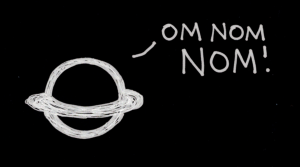
This conjecture, called the (nonlinear) stability of the Kerr spacetime, is one of the most important conjectures in mathematical relativity. Progress has been made over the last couple decades, but the result probably won’t be proven for another few decades (assuming it’s true…)
To give an idea of how hard it is to prove something like this, there’s a similar theorem for Minkowski spacetime, the spacetime of special relativity. It has been proven that any sufficiently small perturbation to Minkwoski space will dissipate, and spacetime will settle back down to flat spacetime. The proof of this result is literally a five hundred page book, though more recent improvements to the techniques have reduced the length of the proof by a hundred pages!
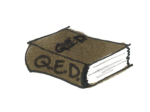
Proving the stability of the Kerr spacetime is going to be difficult.
So, the outside of the Schwarzschild spacetime is expected to be stable. But what about the inside?
Again, we have a simple example showing that the simplest interpretation of stability does not hold.
Instead of adding rotating matter, if we add a bit of electric charge to the black hole, the resulting black hole spacetime behaves in a key way very differently than the Schwarzschild spacetime.
This new spacetime is called the Reissner-Nordstrom spacetime. The usual way we write down the metric is very similar to the Schwarzschild metric. The Schwarzschild metric (in its standard form) is while the Reissner-Nordstrom metric is
(
is the electric charge of the black hole.)
As you might expect from the similar form of the metric, the spacetimes are, in a lot of ways, very similar. Outside the black hole, we have gravity getting weaker and weaker as we move away from the center.
But looking at the metric, there are now three potential singularities. If ,
or
, we divide by zero.
Two of the (coordinate) singularities are like in the Schwarzschild spacetime. At , we have a curvature singularity, just like at
in Schwarzschild. In other words, gravity becomes infinite as you approach the center of the black hole.
At the largest of the ‘s,
, there is an event horizon. The event horizon acts just like the one at
in the Schwarzschild spacetime. It’s the boundary beyond which light can never escape.
But what about the middle ,
?
For that, we need to turn again to Penrose diagrams.
If we do a very similar coordinate transform to the Reissner-Nordstrom spacetime as we did to the Schwarzschild spacetime, this is the diagram we get:
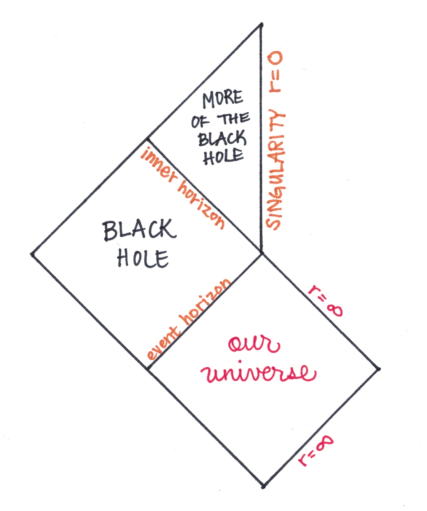
Our universe, outside the black hole, looks essentially the same as the Schwarzschild spacetime.
But what is going on inside the black hole?!?!?
And it only gets worse if we extend the spacetime further, like we did with the Schwarzschild spacetime. We can extend Reissner-Nordstrom much further, like in this diagram.
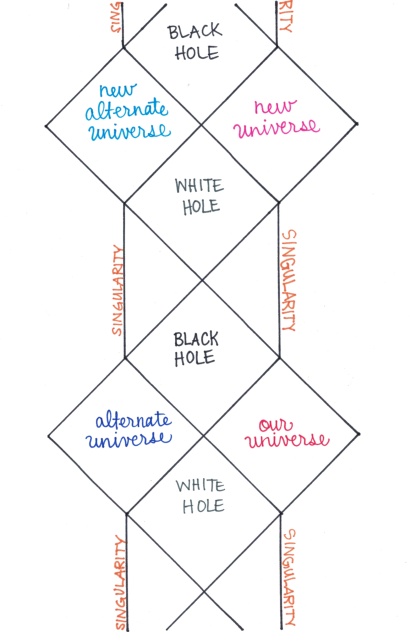
Not only do we have a universe on the other side of the black hole, we have infinitely many more universes to the future and the past of the black hole!
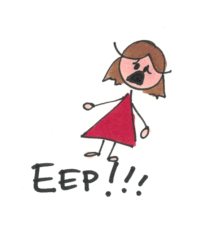
That’s quite a bit different than the Schwarzschild spacetime!
This diagram shows that, if you entered a Reissner-Nordstrom black hole, you could exit the other side. Then, you could enter another black hole, then come out of the white hole region of another copy of the usual part of the Reissner-Nordstrom spacetime. You could never get back to your own universe, but you could keep traversing universe after universe.
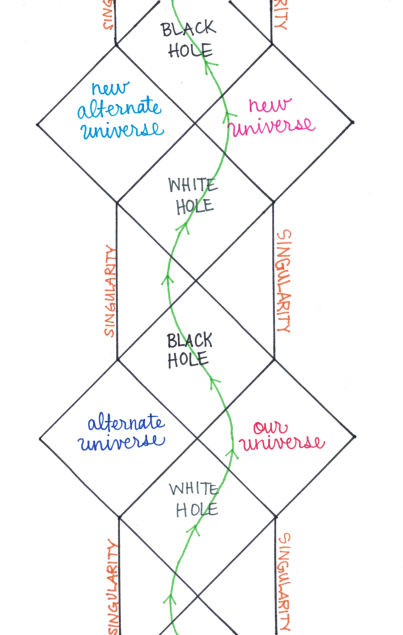
Infinite universes you can visit is pretty cool, but it’s a mathematical and a physical nightmare.
The basis of physics is that you can predict the future with mathematical equations. If you know everything about a system now, you “should” be able to predict how the system will behave in the future.
But this extended spacetime doesn’t follow this rule.
Let’s draw on a diagram what the state of the universe is “now”.
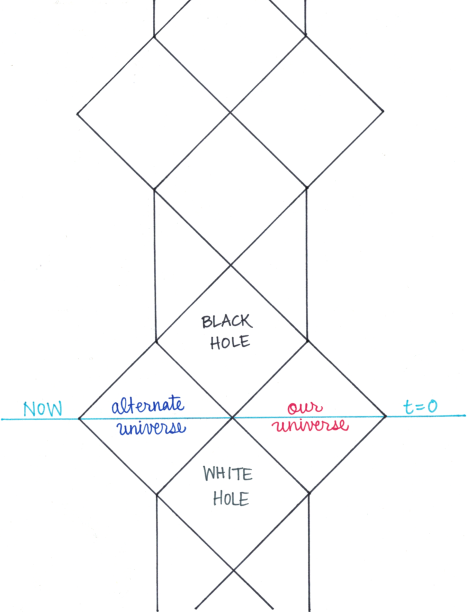
If science works, and if we knew everything that is happening on that slice of spacetime, we should be able to predict everything that occurs in the future.
But, because the singularity is vertical, that predictability breaks down. For instance, a ray of light could come out of the singularity, and affect you, sitting inside the black hole.
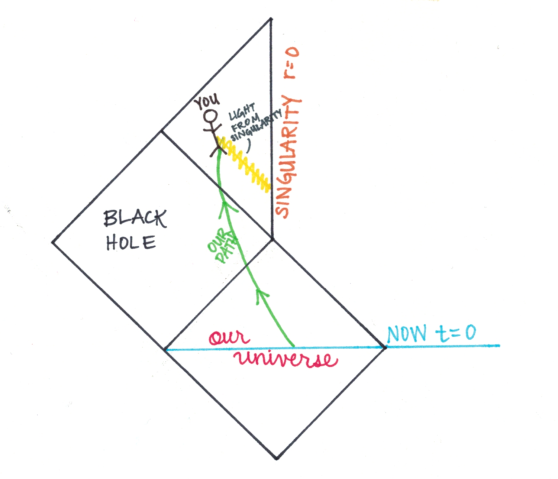
That light came from the singularity, and not from what the universe looks like “now!”
And it’s not just light. Light or people or anything could come out of the singularity.

Cthulhu could then affect something going on in the black hole region. And so we can’t predict what goes on inside the black hole!
Cthulhu is a serious problem.5

So while we were happy to conjecture that the outside of the Schwarzschild (and Kerr and Reissner-Nordstrom) spacetimes are stable, we really don’t want predictability to break down inside of black holes.
In order to avoid this, that means we want the inside of black holes to all act like the Schwarzschild spacetime — if you fall into a black hole, you may get eaten by the singularity, but there’s no unpredictable photon or elder god waiting to devour your soul.
We want the Schwarzschild-type singularity to be stable, but the Reissner-Nordstrom-type singularity to be unstable. That way, in our real universe, since we won’t have any perfectly symmetric black holes, the unpredictable type of singularity won’t occur.
That instability is the content of the “strong cosmic censorship conjecture.”6 This is another of the most important conjectures in mathematical relativity.
The conjecture says that if you take an initial state for the universe and perturb it slightly, (virtually) all perturbations will lead to a universe where you can predict what will happen.
In other words, Cthulhu can only be hiding inside perfectly symmetric, very special black holes. And since, our universe won’t have any of those, we’re free from his threat.
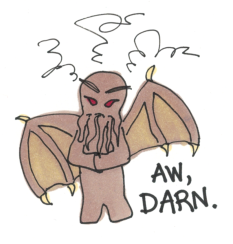
Well, I think that about wraps up my coverage of general relativity for now. Next week I’ll talk about whether you can hear the shape of a drum.
Out of curiosity, does anyone have any requests for mathematical subjects I could cover?
<– Previous Post: The Universe on the Other Side (of the Black Hole)
First post in this series: A Mathematical Intro to General Relativity, Part 1
–> Next Post: Can You Hear the Shape of a Drum? (Part 1)
- Vacuum means there is no matter or energy in the spacetime. ↩
- For instance, light we see from stars is something, and so, since we can see light in space, space is not truly a vacuum. Just very, very close. ↩
- Ok, really, they use the Kerr metric, which is the rotating-star version of the Schwarzschild metric. Since most stars and black holes rotate fairly quickly, the rotation has important, and quite interesting, effects on the overall gravity. But the Kerr spacetime is still a very symmetric, very special spacetime, and so the point holds. ↩
- In reality, viscous forces in the air would probably damp out the change to the wind caused by the butterfly, but weather is complicated enough that we’ll never know for sure. ↩
- Cthulhu is a serious problem in any circumstance, but really anything coming out of the singularity makes it impossible to predict what’s going on. It’s a massive wild card. ↩
- Despite their names, the “weak” cosmic censorship conjecture is not a weaker form of the same conjecture. It’s an independent, though related conjecture. It says that any singularities in spacetime should be hid behind an event horizon, like in the black holes we’ve talked about. In other words, the event horizon itself should be stable, while not having an event horizon should be unstable. ↩

Thank you Dr. Dilts for your great articles. As an undergraduate in physics, I enjoy being able to see the more mathematical side of things every once in a while. Thanks for your hard work!
I was wondering though, would it be possible for you to allow your full articles to be read through RSS? At the moment, they are truncated, so I cannot read the articles from my RSS reader.
LikeLike
Thanks for the kind words!
I suppose I could make that change. Done!
LikeLike
Loved the series on General Relativity! I’m an undergrad physicist who hasn’t actually started General Relativity yet (only Special), so it’s been super interesting to read.
Would you be able to do a few posts on Topology in Physics?
LikeLike
I’m glad you liked it!
What precisely are you looking for? I know a few results about how topology and general relativity are connected. I’m somewhat aware of topological phase transitions, and a few uses of topology in biology and data science.
LikeLike
I would be interested in topics like Goddl’s incompleteness theorem and related topics.
LikeLike
Great idea! I’ll be sure to cover that.
LikeLike
Can you talk about algebraic geometry at all?
LikeLike
Well, I’ve never personally learned very much about it, but I have some resources. It’ll take a while, but I’ll try to read some things and see if there’s something I feel comfortable saying on the subject.
LikeLike
Great series! Finally, I am getting what is going on in Penrose diagram.
Thank you for your incredible work. I am looking forward what you will bring next. My hint would be some complex analysis maybe.
LikeLike
Hi, as far as I know the classical electric field is ~1/r as the gravitational field, so why do we get in this version 1/r^2 for the electric field and 1/r for the gravitational?
LikeLike
I’m pretty sure that both gravity and electromagnetism fall off as 1/r^2, unless we’re talking about different things, like the potential field.
LikeLike
I was talking about the potential field, but the main question I’m asking is why they behave similarly in the classical version but show up differently in the metric
LikeLike